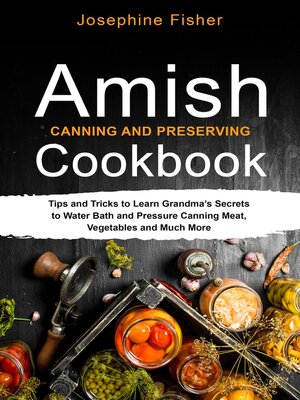AMISH CANNING AND PRESERVING COOKBOOK
ebook ∣ Tips and Tricks to Learn Grandma's Secrets to Water Bath and Pressure Canning Meat, Vegetables and Much More
By Josephine Fisher

Sign up to save your library
With an OverDrive account, you can save your favorite libraries for at-a-glance information about availability. Find out more about OverDrive accounts.
Find this title in Libby, the library reading app by OverDrive.



Search for a digital library with this title
Title found at these libraries:
| Library Name | Distance |
|---|---|
| Loading... |
If you were to ask people to tell you what it meant to be Amish, they would say, "It means living a simple, traditional life where the community is very tight-knit, stay away from outsiders, and don't use any technology invented after the dawn of the 20th century." For the most part, this would be accurate. However, if that tenth person you asked happened to be Nana Ruth, my crookedbacked, gnarled-faced, sharp-as-a-thumbtack grandmother, she would have a whole lot more to say about the matter. This is because, until the age of seventeen, Nana Ruth grew up in an Amish community known as the "Pennsylvania Dutch" out in Lancaster County, Pennsylvania.
When an Amish youth hit their late teens to early twenties, they're allowed to go on a sort of "spring break" from being Amish, a ritual known as "Rumspringa." Popular culture will often depict Rumspringa as a period of total anarchy for the participants, where they will wear scandalous clothing like t-shirts and jeans, dance to pop music they hear on the radio, and even watch daytime talk shows on the television. Plenty of partying and alcohol imbibing is included for good measure, just like many teens across the nation who are suddenly without parental guidance will indulge in. For Nana Ruth, though, Rumspringa was a far more mundane affair.







